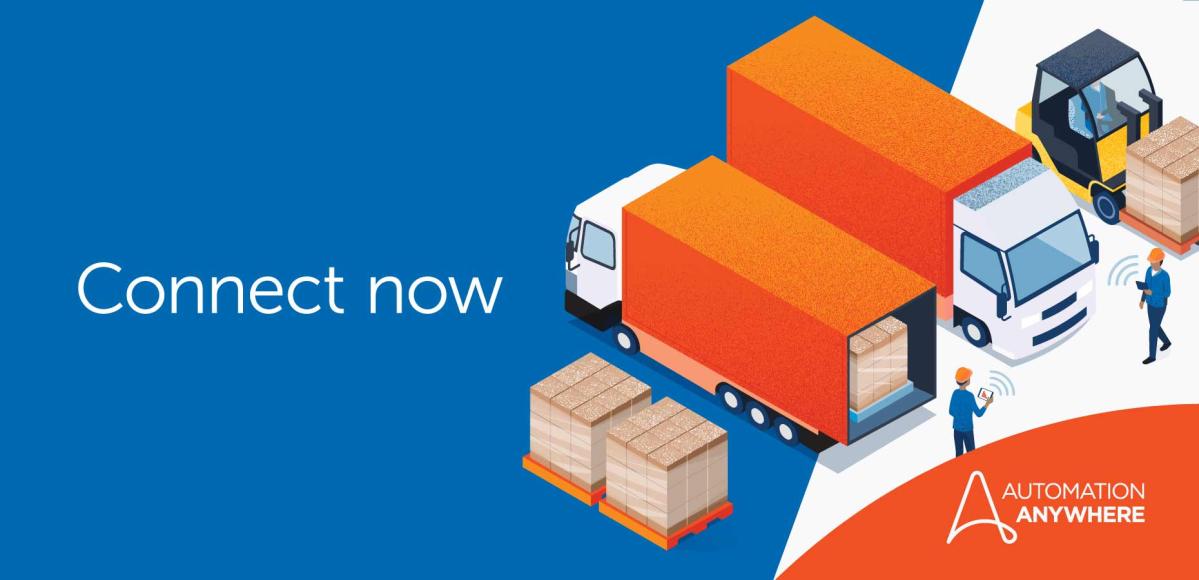- Login
- Search
- Contact Us
-
Have a question? Our team is here to help guide you on your automation journey.
-
Explore support plans designed to match your business requirements.
-
How can we help you?
-
- AI
AI Without the Hype From pilot to full deployment, our experts partner with you to ensure real, repeatable results. Get Started
- Automation Anywhere AI
-
- Solutions
Featured Agentic Solutions
Accounts Payable Invoice automation—No setup. No code. Just results. Accounts Payable
Customer Onboarding Scale KYC/AML workflows. Customer Onboarding
Customer Support Keep queues moving, even at peak load. Customer Support
Healthcare RCM Revenue cycle management that runs itself. Healthcare RCM
- Products
Platform Features
- Agentic process automation (APA)
- Robotic Process Automation (RPA)
- View all Products
-
- Resources
Get Community Edition: Start automating instantly with FREE access to full-featured automation with Cloud Community Edition.
Featured
 Named a 2025 Gartner® Magic Quadrant™ Leader for RPA.Recognized as a Leader for the Seventh Year in a Row Download report Download report
Named a 2025 Gartner® Magic Quadrant™ Leader for RPA.Recognized as a Leader for the Seventh Year in a Row Download report Download report- Become an Expert
- Developer Tools
- Get Support
- View all resources
-
- Partners
Find an Automation Anywhere Partner Explore our global network of trusted partners to support your Automation journey Find a Partner Find a Partner
- Find a Partner
- For Partners
-
Blog
IoT Technology—How It Works and Its Benefits
Navigate to content
IoT is a growing field of technology that refers to the expanding network of physical devices embedded with electronics. These devices can be thought of as tiny computers constantly communicating with one another, broadcasting data about their conditions and operations, helping people make informed decisions, and improving performance.
IoT technology works by connecting devices to the internet and allowing them to "talk" with one another through various communication protocols like Bluetooth, Wi-Fi, NFC, or cellular data networks. It will enable each device to collect and share data to improve safety, efficiency, productivity, decision-making, and more.
If you're wondering how to use IoT technology to your advantage, read on. This blog post will cover its benefits for businesses, how it works, and what you can do to maximize them.
Collecting and sharing
IoT devices collect and share data through user input or from the sensors they're equipped with to gather information about their surroundings. For example, a weather station can take temperature, humidity, and atmospheric pressure readings.
This data is then transmitted to a central system for analysis and processing. The data can generate insights, improving the devices' performance or making informed decisions.
IoT technology consists of three main components: sensors, actuators, and a network.
Sensors collect data about the physical world, such as temperature or sound. Actuators are devices that can take action based on the data collected by sensors. Finally, a network is needed to connect sensors and actuators so they can communicate with each other.
How you benefit
There are many benefits of IoT technology, including:
1. Increased safety
IoT technology can create safer environments. For example, a sensor can detect a gas leak and automatically shut off the gas supply. It can, later on, prevent explosions and save lives.
2. Increased efficiency
Automating tasks and improving processes are possible with IoT technology. Sensors can track the inventory of a manufacturing plant. If the inventory levels get low, the sensor can automatically order more parts from suppliers, saving time and money.
3. Increased productivity
The Internet of Things can help businesses and organizations reduce downtime and be more productive. For example, a sensor can track the performance of a machine. If not working correctly, it can notify the maintenance team so they can fix the problem.
4. Improved customer service
Using it can help businesses provide better customer service. For example, a sensor can track the location of a package. If there is a delay with the delivery, the sensor can alert customers and let them know when to expect it, thus improving customer satisfaction.
5. Improved decision-making
This technology can provide the data needed to make informed decisions. For example, a sensor can track the usage of a product. This data can help you decide when to restock or discontinue the product.
IoT technology is the future of connectivity and has many potential benefits for users as it makes our lives more convenient.
Get the Most Out of IoT with the Help of Automation Anywhere.
About Automation Anywhere Staff
Get to know the Agentic Process Automation System.

For Students & Developers
Start automating instantly with FREE access to full-featured automation with Cloud Community Edition.



